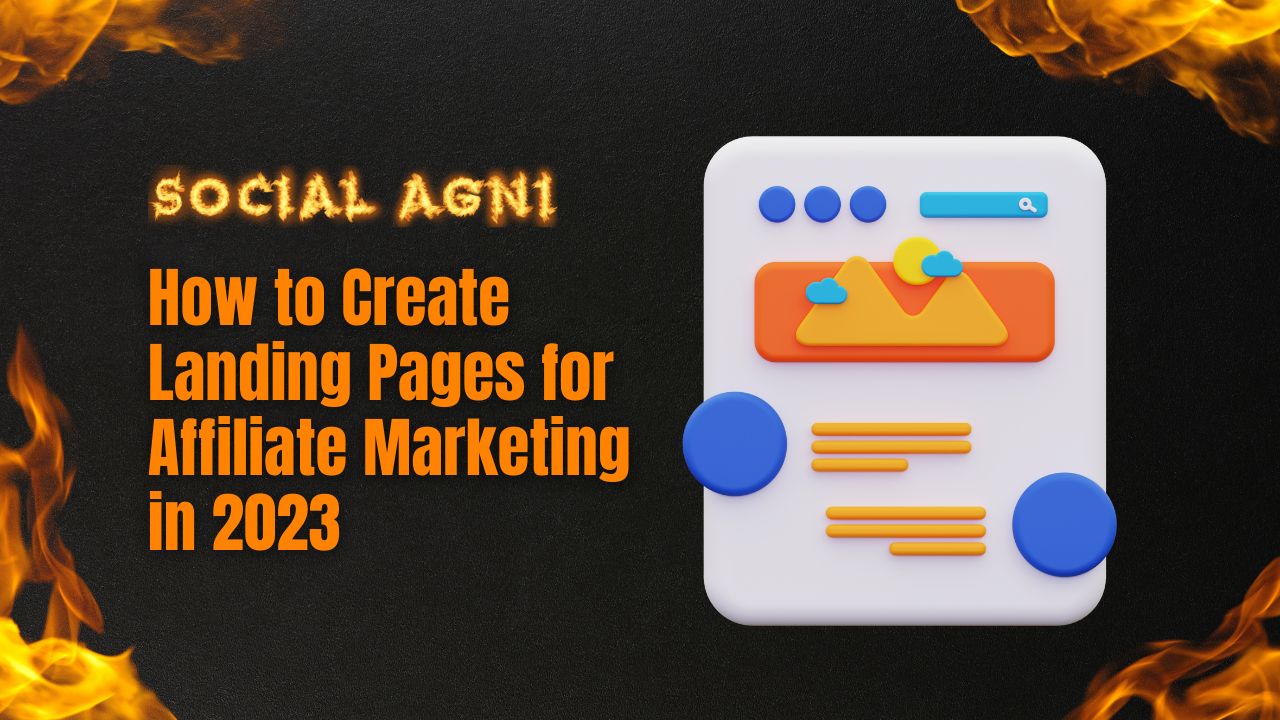Affiliate marketing success depends on landing pages. Affiliate marketers need high-converting landing pages in 2023 to stay ahead. This comprehensive article covers the 2023 affiliate marketing landing page design. Start with affiliate marketing landing pages. Landing pages introduce customers to products and services. They streamline the user experience and bring customers to one offer or CTA, increasing conversion rates. Landing pages help affiliate marketers communicate their products’ USPs and motivate buyers. Affiliate landing pages are beneficial. These pages allow marketers to tailor their messaging and design to their target audience’s pain points. Personalizing and engaging prospects may boost conversion rates. Landing pages disclose user behavior and campaign efficacy, helping marketers improve. 2023 affiliate marketers must study their target market to create effective landing pages. Understanding their audience’s needs wants, and pain areas help marketers generate compelling content and design. Marketers may find best practices, unique value propositions, and market gaps by analyzing competitors’ landing pages. Landing page optimization needs keyword research. Landing page keywords may improve search engine rankings, organic traffic, and conversions. Landing page content should match keywords to attract the right audience and produce quality leads. Affiliate marketers must prioritize landing page design and structure. A layout and format that fits marketing goals and target audience preferences can improve user experience. Pictures and visuals may help visitors generate a strong first impression. Marketers must consider landing page loading speed in 2023. People want quick-loading landing pages. Slow pages annoy visitors and harm SEO. Image optimization, code minification, and CDNs accelerate page loads for marketers. Writing conversion-boosting landing page content is next. Headlines can attract customers. The landing page should highlight the affiliate product’s benefits and features to attract buyers. Strategically positioning CTAs on the website will persuade visitors to buy, subscribe, or download. SEO optimized landing pages and search engine rankings. Marketers add keywords to landing page URLs, meta tags, and headers. 1. Understanding the Role of Landing Pages in Affiliate Marketing Landing pages power effective affiliate marketing operations. Landing pages must be understood in the affiliate marketing ecosystem to be completely utilized. This section defines landing pages, their purpose, and their benefits to affiliate marketers. A. Landing Pages: Definition and Use Landing pages, often called destination pages or lead capture pages, are separate web pages meant to convert visitors. Landing pages are designed to direct visitors to a specific call-to-action (CTA). Landing pages help convert visitors into buyers, subscribers, or downloaders. Landing pages connect affiliate marketers to their target audiences. They help advertisers to send a targeted message, demonstrate the product or service’s value, and urge visitors to take action. B. Affiliate Marketers’ Landing Page Advantages Increased Conversion Rates: Landing pages are optimized to turn visitors into customers or leads. Landing pages outperform conventional website pages by offering a clear message, reducing distractions, and bringing readers to a compelling CTA. Enhanced User Experience: Landing pages improve user experience. They reduce clutter, simplify navigation, and provide visitors with the information they need to decide. Landing pages improve customer happiness and engagement by providing a smooth, straightforward experience. Targeted Messaging and Personalization: Landing pages allow affiliate marketers to customize their messaging to their target audience’s interests, preferences, and pain areas. Marketers can engage with people, resonate emotionally, and drive conversions by tailoring content to their requirements. Data and Insights: Landing pages provide exact campaign tracking and assessment. Marketers may utilize analytics solutions to track user activity, conversion rates, bounce rates, and other metrics. These insights optimize landing page performance. Increased Relevance and Ad Quality Score: Advertising systems give landing pages with relevant content better quality scores. This improves ad placement, visibility, and advertising costs for affiliate marketers. Affiliate marketing efforts start with landing pages. Affiliate marketers may boost their promotions, attract targeted visitors, and meet conversion targets by using them. We will discuss target market research for landing pages in the following part to help marketers design engaging content. 2. Conducting Target Market Research for Landing Pages Affiliate marketing landing pages require detailed target market analysis. Understanding your target audience, their goals, preferences, and pain points can help you develop landing pages that convert. This section covers target market research and examining rivals’ landing pages to acquire an edge. A. Determining Your Audience’s Needs Demographic Analysis: Determine your target audience’s age, gender, geography, income, and interests. This information will help you customize your landing page. Psychographic Analysis: Understand your audience’s motives, values, beliefs, and goals. Understanding their emotional triggers and desires can help you create engaging communications. Pain Points and Challenges: Determine what your affiliate product or service can address for your target audience. This lets you showcase your offering’s benefits and solutions, making it a valued solution. B. Examining Competitors’ Landing Pages and Strategies Competitors: Find your top affiliate marketing competitors. Find those marketing comparable items or targeting a similar audience. Landing Page Analysis: Analyze your rivals’ landing pages to learn their strategies, design, content, and CTAs. Note their strengths, shortcomings, unique value propositions, and holes you may exploit. User Experience Analysis: Assess rivals’ landing pages. Consider information flow, navigation, load times, and design aesthetics. Improve your landing page user experience. C. Keyword Research for Landing Page Optimization Keyword Research: Find relevant, high-intent affiliate keywords. Find high-volume, low-competition keywords utilizing Google Keyword Planner, SEMrush, or Ahrefs. Keyword Integration: Strategically integrate keywords into landing page content. Optimize page names, headers, meta tags, and body text for SEO and organic traffic. Long-tail Keywords: Target particular user intent or inquiries. These keywords have reduced competition and greater conversion rates. Create content that answers long-tail inquiries and informs people. By researching your target market, competition, and keywords, you can build landing pages that meet your audience’s demands. We will learn how to develop high-converting landing pages in the following part. 3. Designing High-Converting Landing Pages Affiliate landing pages depend on design. A beautiful, user-friendly design may attract visitors, improve their experience, and boost conversions. This section discusses landing page design best practices. A. Selecting a Good Landing Page Format Single
